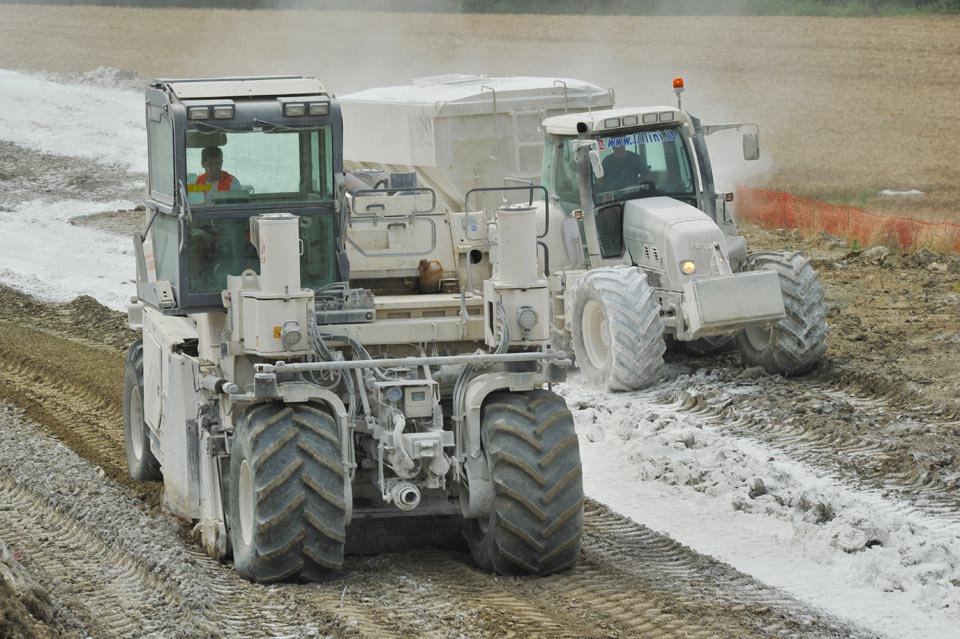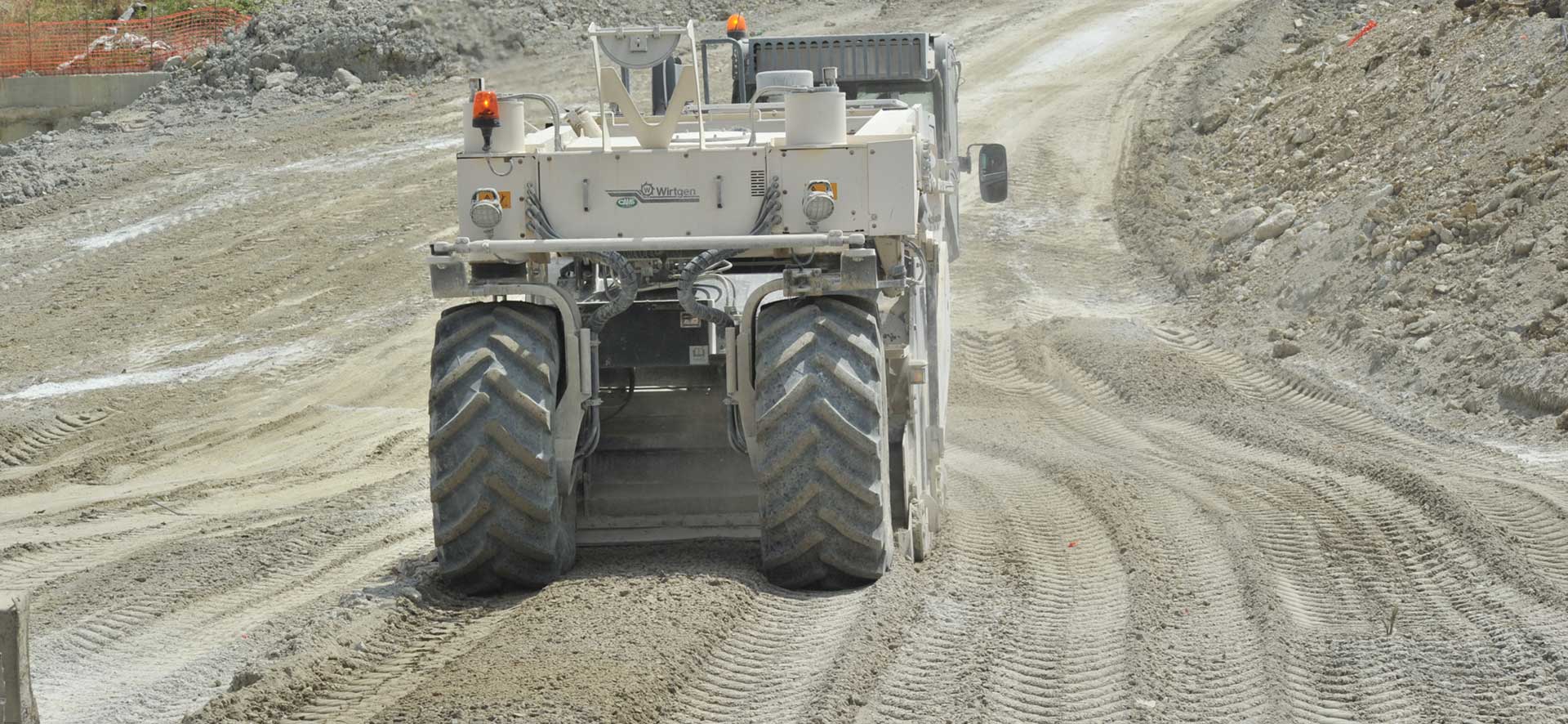Lime stabilization
A pozzolanic reaction produces calcium silicate hydrates and calcium aluminate hydrates since the calcium in the lime reacts with the aluminates and silicates contained in the clay. The full-term pozzolanic reaction continues over an extended period of time, even decades, as long as lime is present and pH values remain very high.
As a result, lime stabilization strengthens the soil’s bearing capacity, which increases over time, but also achieves the desired value in just a few days.
For the pozzolanic reaction and lime stabilization to give the best results, laying and mixing processes must be carried out according to defined procedures and equipment must guarantee perfect mixing and compaction. Specifically, it is necessary to analyze the composition of the soil and establish the percentage of lime required to obtain optimum results.
L2 Lillini benefits from the skill and professionalism of the company’s technicians and operators as well as advanced machinery and equipment, ensuring that the stabilization process is executed in optimum conditions regardless of project type.

Advantages and benefits of lime stabilization
- it increases the elastic module of the soil (in some cases by 10+ times)
- it increases shear strength (in some cases by 20+ times)
- it imparts high strength to the treated soil even when submitted to high static and dynamic loads over a period of time. It has the capacity to repair itself if damaged
- it has a high resistance to thermal variations and adverse weather conditions

